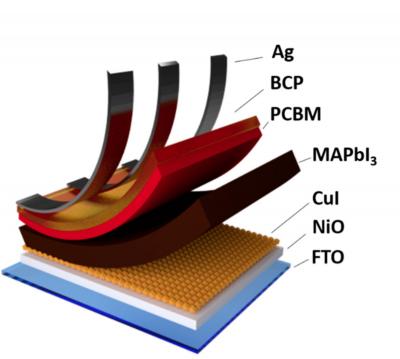A team of Russian-Italian researchers is exploring the use of copper iodide (CuI) as a way to improve the stability of perovskite solar cells. The team from Russia-based institutes NUST MISIS and IPCE RAS, and Italy's University of Rome Tor Vergata, has applied an additional layer of p-type copper iodide semiconductor, made of molecule of methylammonium lead iodine (MAPbI3), to a perovskite cell for efficient surface passivation.

According to the authors, the MAPbI3 photoactive layer crystallizes on the surface of a p-type transport layer carrying positive charges and does not demonstrate rapid degradation when exposed to light when accompanied by the release of iodine compounds similar to the used perovskite material. 'As we know, under constant illumination and subsequent heating of perovskite solar cells with a photoactive layer of MAPbI3, free iodine and hydrogen acid are released, which harms the interface between the layers of perovskite and NiO, forming a set of defects and significantly reducing the stability and performance of the device', said Danila Saranin, researcher at NUST MISIS Laboratory for Advanced Solar Energy.
The researchers also claim that Cul, unlike other expensive rare materials such as derivatives of organometallic compounds of ferrocene and low molecular weight organic semiconductors, is a more accessible and easier to use inorganic material. 'This hypothesis was proved by the results of the experiment: the improvement of the structure of the perovskite element increased the stability of its work by an average of 40%, and the efficiency increased to 15.2%,' according to the research paper.
As a next step, the scientists are planning to develop an analogous layer to stabilize the transmission of negative charges, and to reproduce the same technology on a large-format module.



